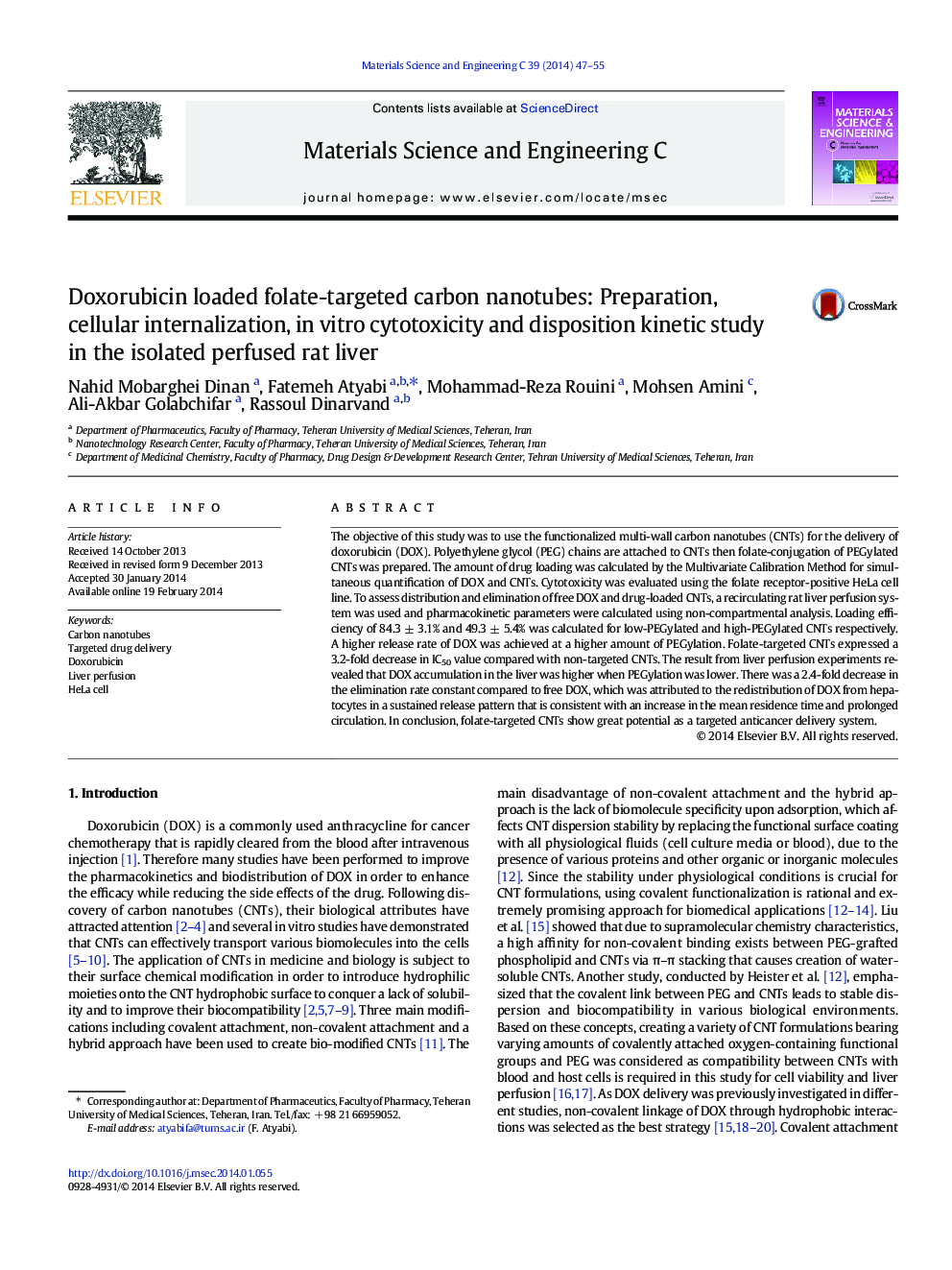| Article ID | Journal | Published Year | Pages | File Type |
|---|---|---|---|---|
| 1428761 | Materials Science and Engineering: C | 2014 | 9 Pages |
•Folate targeted PEGylated carbon nanotube was synthesized for doxorubicin delivery.•A method for the simultaneous quantification of drug and vehicle was developed.•Enhanced cytotoxicity of drug loaded CNTs against HeLa cells was observed.•Cellular uptake of doxorubicin loaded CNTs was confirmed by confocal laser scanning microscopy.•A longer blood circulation time was observed for drug loaded CNTs.
The objective of this study was to use the functionalized multi-wall carbon nanotubes (CNTs) for the delivery of doxorubicin (DOX). Polyethylene glycol (PEG) chains are attached to CNTs then folate-conjugation of PEGylated CNTs was prepared. The amount of drug loading was calculated by the Multivariate Calibration Method for simultaneous quantification of DOX and CNTs. Cytotoxicity was evaluated using the folate receptor-positive HeLa cell line. To assess distribution and elimination of free DOX and drug-loaded CNTs, a recirculating rat liver perfusion system was used and pharmacokinetic parameters were calculated using non-compartmental analysis. Loading efficiency of 84.3 ± 3.1% and 49.3 ± 5.4% was calculated for low-PEGylated and high-PEGylated CNTs respectively. A higher release rate of DOX was achieved at a higher amount of PEGylation. Folate-targeted CNTs expressed a 3.2-fold decrease in IC50 value compared with non-targeted CNTs. The result from liver perfusion experiments revealed that DOX accumulation in the liver was higher when PEGylation was lower. There was a 2.4-fold decrease in the elimination rate constant compared to free DOX, which was attributed to the redistribution of DOX from hepatocytes in a sustained release pattern that is consistent with an increase in the mean residence time and prolonged circulation. In conclusion, folate-targeted CNTs show great potential as a targeted anticancer delivery system.
Graphical abstractFigure optionsDownload full-size imageDownload as PowerPoint slide
